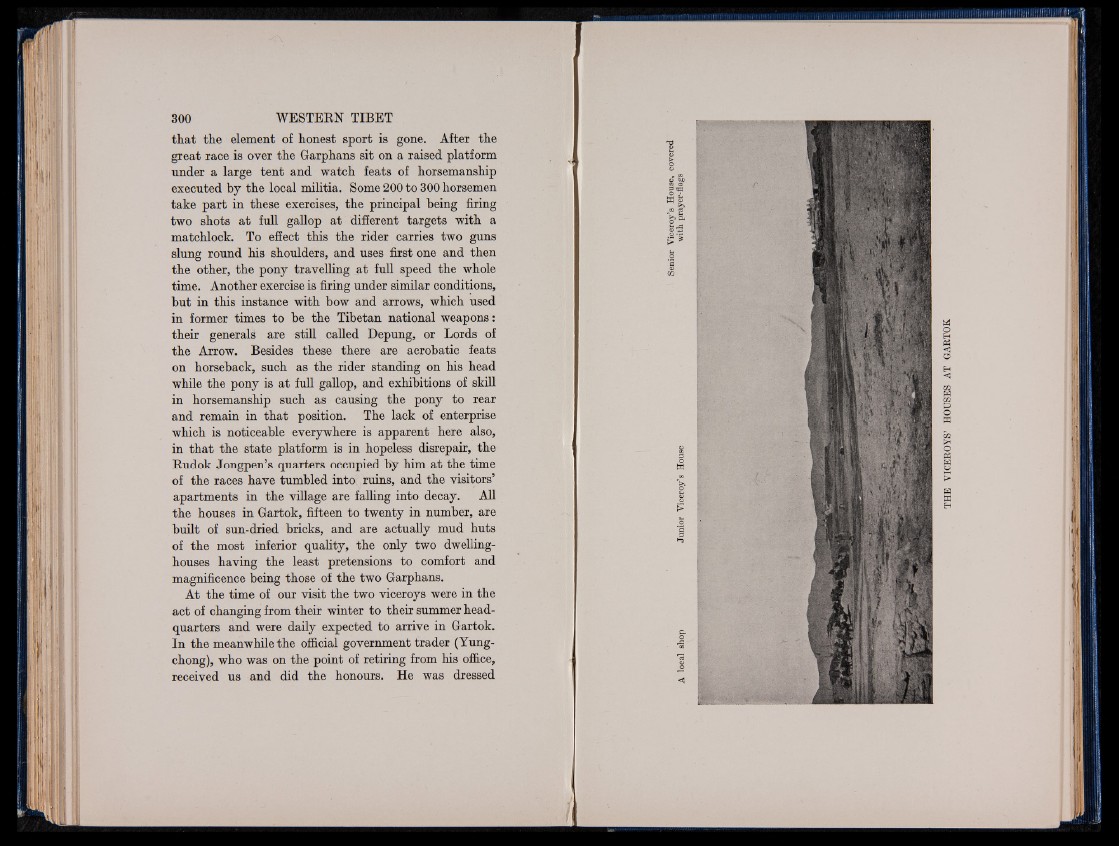
that the element of honest sport is gone. After the
great race is over the Garphans sit on a raised platform
under a large tent and watch feats of horsemanship
executed by the local militia. Some 200 to 300 horsemen
take part in these exercises, the principal being firing
two shots at full gallop at different targets with a
matchlock. To effect this the rider carries two guns
slung round his shoulders, and uses first one and then
the other, the pony travelling at full speed the whole
time. Another exercise is firing under similar conditions,
but in this instance with bow and arrows, which used
in former times to be the Tibetan national weapons:
their generals are still called Depung, or Lords of
the Arrow. Besides these there are acrobatic feats
on horseback, such as the rider standing on his head
while the pony is at full gallop, and exhibitions of skill
in horsemanship such as causing the pony to rear
and remain in that position. The lack of enterprise
which is noticeable everywhere is apparent here also,
in that the state platform is in hopeless disrepair, the
Rudok Jongpen’s quarters occupied by him at the time
of the races have tumbled into ruins, and the visitors’
apartments in the village are falling into decay. All
the houses in Gartok, fifteen to twenty in number, are
built of sun-dried bricks, and are actually mud huts
of the most inferior quality, the only two dwelling-
houses having the least pretensions to comfort and
magnificence being those of the two Garphans.
At the time of our visit the two viceroys were in the
act of changing from their winter to their summer headquarters
and were daily expected to arrive in Gartok.
In the meanwhile the official government trader (Yung-
chong), who was on the point of retiring from his office,
receiyed us and did the honours. He was dressed
hi J S